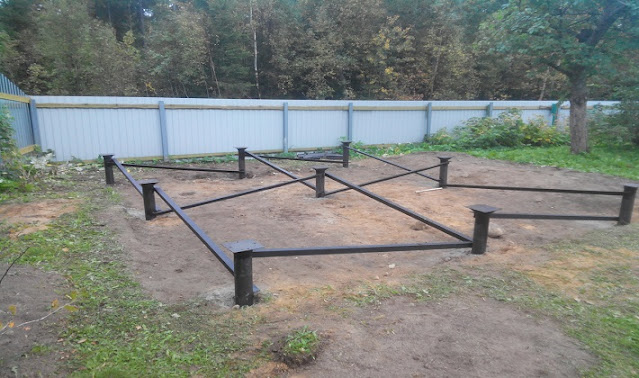Screw piles are a type of engineering that has been around for ages. Man has needed to sustain structures for as long as he has erected them, whether during initial construction or subsequently when they require repair or improvement. Modern screw piles give civil engineers another flexible and cost-effective tool in their toolbox.
What exactly are screw piles?
Screw Piles also known as helical steel piles is the most recent evolution of a technique invented by Irish engineer Alexander Mitchell in the 1830s for use on lighthouse supports.
Today’s version of Mitchell’s concept typically consists of a robust but light galvanised steel shaft with welded low-pitch steel plates, resulting in a device that resembles the traditional Archimedes screw.
On-site, simple hand-held or machine-mounted drilling equipment is used to screw the piles into the ground. Pile foundation technology has provided engineers with a portable and compact solution for sites with a variety of constraints, such as tight project deadlines, limited site access, and minimal environmental disruption.
For more than a decade, ground screws have been universally recognised in fence building, but ground screws for decks have not received the same level of acceptance. These novel products, on the other hand, have several advantages over traditional heaps and posts or pad and post systems. They’ve changed a lot in recent years, with more styles and widths to choose from.
Screw Piles have several advantages:
This piling technique’s simplicity and elegance make it ideal for engineering applications. The following are some of them:
- Installing quickly saves both time and money.
- There are no excavations or spoils to transport, which saves money, especially if the land is contaminated.
- There is no need for concrete or curing time, allowing for faster site commissioning.
- Small footprint – allows for smaller bases in tight spaces.
- Flexible design – frames can be constructed to bridge services, enabling the construction of area congested services without the requirement for cable re-routing.
- Removable and reusable materials provide a long-term solution.
- In contrast to concrete, installation can be done at low temperatures with no downtime.
- In soft ground, when standard piling is more expensive and concrete is technically unsuitable, this is a cost-effective solution.
Screw piles are used in the following situations:
Underpinning buildings, supporting road and trackside gantries, slope stabilisation, and mounting telecommunications towers are all common applications. The screw pile’s specific adaptability for applications with a strong overturning moment is invaluable in many of these functions.
Pile foundations are simple on slopes, and the lightweight equipment utilised in most applications is less disruptive than heavy pile-driving equipment. Less digging and soil disturbance results in less trash, clean up, and noise during construction. Screws and precast pilings can be put under structural load right away, whereas poured-in-place piles need to dry first.
Screw piles are quick and simple to install, and there is no excavation to cart away, saving you money, especially if you have polluted ground to remove. They’re also great for small spaces because there’s no predetermined size and each one is manufactured to order.

